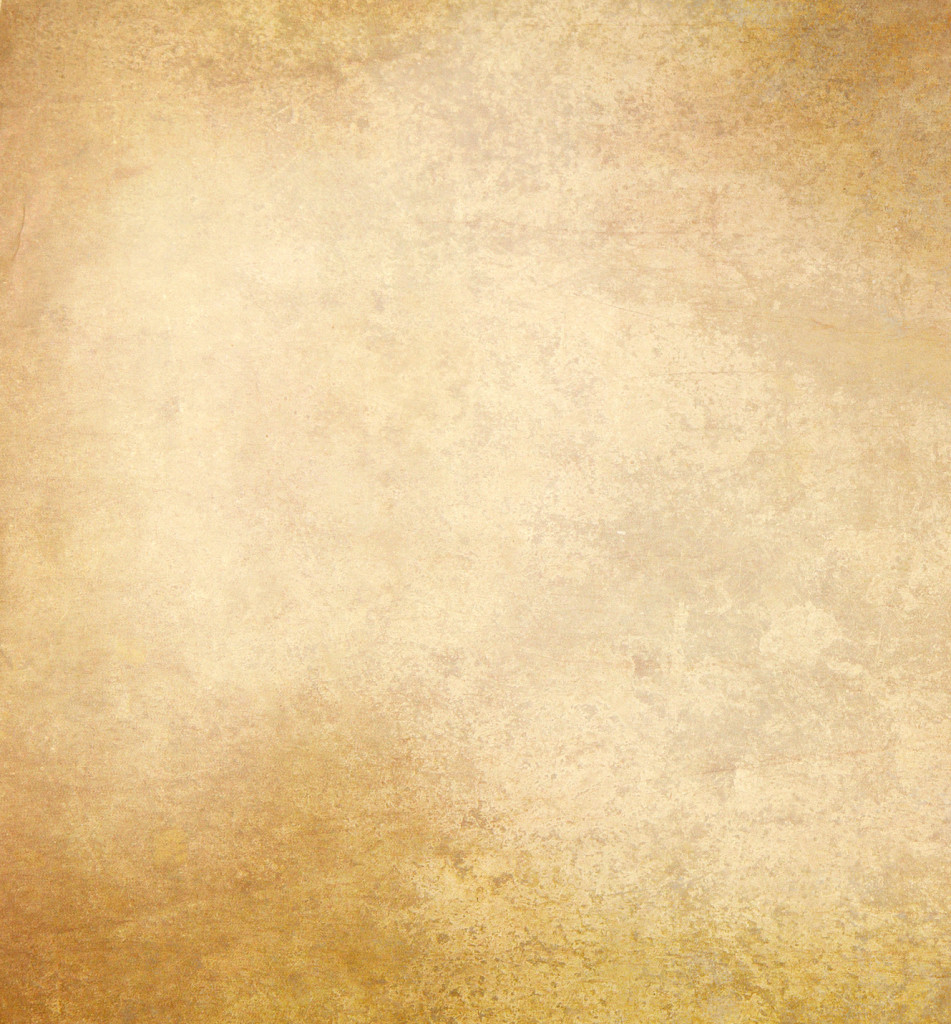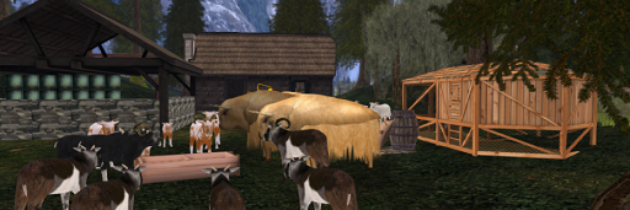Animals
The G&S animals are typical your farm animals but based on the animals found in the books of Gor, many carry Gorean names but are used in a variety of earth and fantasy role play realms, and also for personal farms; bosk (cattle), tarsk (boar or pig), tharlarion (large dinosaur type reptiles – ok not a farm animal but impressive!), verr (goats) and vulo (poultry). There are also fishing rods to catch a fish including tuna, salmon, eel and seaweed which can only be caught at tuna tournaments.
The G&S bosk, tarsk, tharlarion and verr are breedable and need food, water and care to grow. Vulo reproduce in the coop, produce eggs, and need grain and water. The fish are not breedable, they are caught and cooked.
Floating text is shown on the breedable animals providing their statistics (this can be turned off via the menu – click the animal to get the menu box). The statistics vary on each type of animal:
– Date of Birth (Bosk & Verr) / Life Expectancy (Tarsk & Tharlarion)
– Age: baby or adult
– Sex: male or female
– Meat: 1-15 (depends on animal type / indicates oil on tharlarion)
– Color: also indicates purebred or crossbred
– Skin: normal or excellent (Bosk & Verr only)
– Class: common, dwarf or giant (Tarsk only)
– Happiness: rises and falls with food & water levels
– Food
– Water
– Pregnant (adult females only)
G&S breeding and genetics is based on Gregor Johann Mendel (1822-1884) principles of inheritance. Through his work on pea plants, Mendel deduced that genes come in pairs and are inherited as distinct units, one from each parent. He tracked the segregation of parental genes and their appearance in the offspring as dominant or recessive traits.
The G&S Main Store and Market Place Store has starter kits for the bosk, tharlarion and verr, and a burrow for the tarsk. Starter animals are meat 5 out of the box/burrow. Their offspring will increase in meat value with each generation to the maximum meat level for the animal type: 10 for bosk, verr and tharlarion; 10 for common tarsk, 15 for giant tarsk; and 5 for the dwarf tarsk, although the meat level on dwarf tarsk is only generation related and no indication of the amount of meat delivered as you receive a whole carcass to cook.
The bosk, verr and tharlarion born from the starter kits carry the potential for their offspring to be any of the colours available (3 colours of bosk, 11 colours of verr, 9 colours of tharlarion). Tarsk hunted from the burrow also have the potential of producing any of the 6 colours in their offspring. Babies born from the starter animals can be either pure or crossbred; pure being 2 genes of the same colour; crossbred being 2 different colour genes, one which shows as the colour of the coat/skin, the other unknown.
The adult size (meat value) of animals, colour, skin and purity (purebred /crossbred) is determined by genetic inheritance from their parents – colour and purity from the dominant/recessive genes. The meat value also depends on the quality of life they have been given in their growth phase as a baby. Starvation due to lack of food or water and being kept in inventory for too long will reduce happiness and affect meat value both adults and babies if they survive. All animals will die if kept without food/water for too long. Animals will feed comfortably within 10m of food and water, and breed within the same distance.
Seafood, meat and milk from animals has an expiry time – fish 2 days; eel, oyster, seaweed, salmon and tuna 5 days; bosk and verr meat 4 days; tarsk meats 8 days; and milk 2 days. To preserve the seafood and meats packing into containers of either baskets or boxes and adding salt will stop the deterioration. Milk and oil must be collected in jars or buckets. Milk expiry can be extended to 16 days by collecting in a Hermetic Bucket. Oil does not expire.
Happiness below 70% in babies for a long duration will affect their meat value as an adult, losing more meat value the lower the happiness % drops. When a baby has happiness of less than 50% they stop growing in size and may be stunted when they become and adult, most taking longer or never becoming an adult to breed. Over crowding and loneliness will affect the happiness – groups of more than 6 of the same species will bring down the happiness of the adult and babies, and a baby sitting alone can drop in happiness. It is possible to maintain high happiness in large groups around a feeder by setting 3-4 animals together and keeping a little distance between the next small grouping.
Movement/Follow Option: All G&S animals have the movement option on the main menu to follow you. Verr, tarsk and tharlarion need pathfinding enabled on land for this to work. If you have animals ‘follow’ you, they graze while walking and food/water levels on the animal will rise quickly which in turn brings happiness up as well. If the animal already has low happiness this will not increase higher than it is set to eg unhappy animal at 50% happiness when food/water is at 100% will never rise higher than 50%. The movement/follow option increases their land impact – this is an SL error with mesh items – so don’t forget to turn off movement before you log/leave. Tharlarions that are still set to ‘follow’ will not ride properly if they are tamed. Ensure you put your animal near the feeder and turn off movement off before you leave.
For further information and tips on the individual species, see the links to pages on the top menu under About G&S for bosk (cattle), fishing, tarsk (boar or pig), tharlarion, verr (goats), vulo (poultry) and tuna tournaments.
[G&S] Google Drive Help Files
Online support documentation and instructions for all the G&S products – scroll down in documents for English and other language translation.



